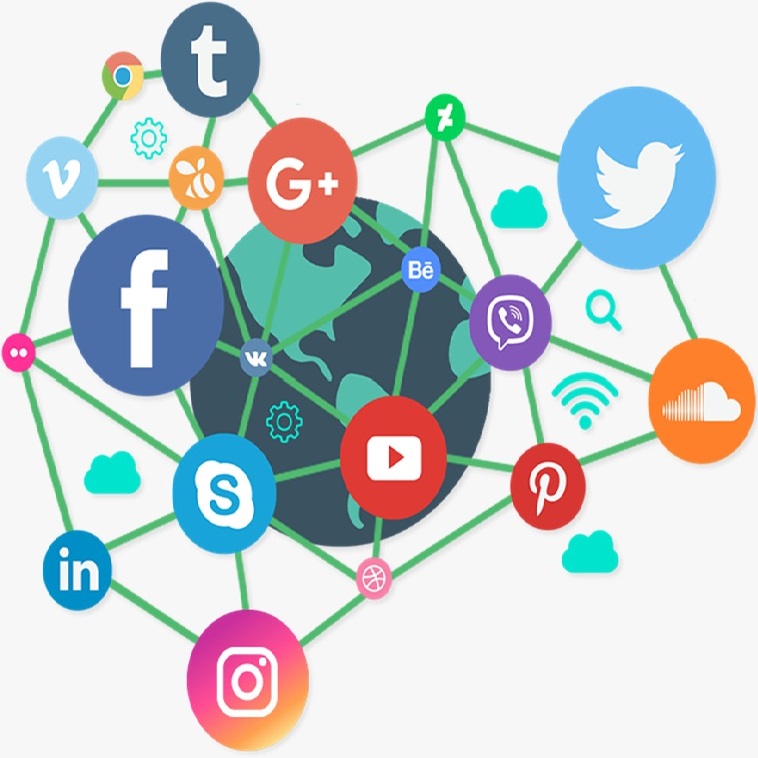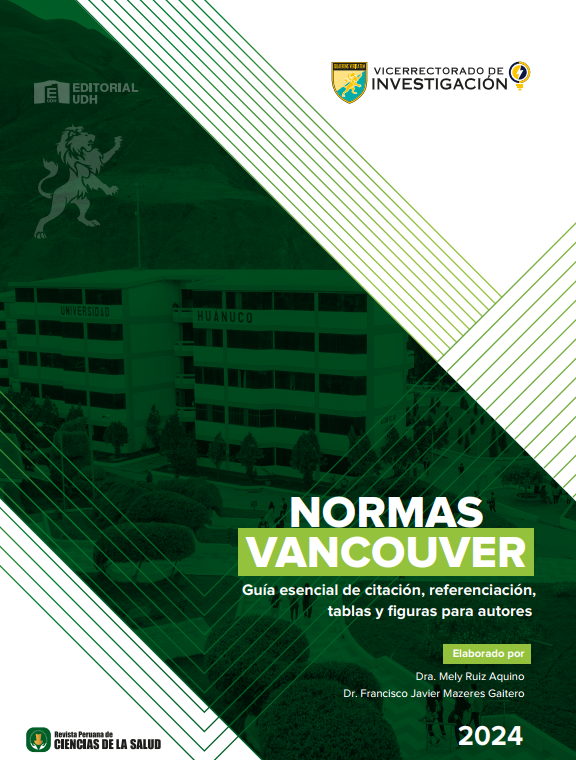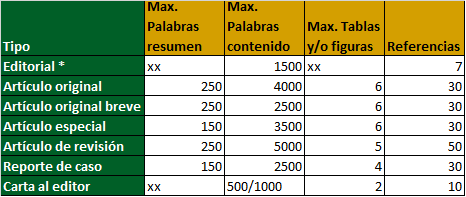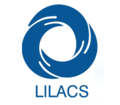Use of Social Networks in Health Promotion Students in the era of COVID-19
DOI:
https://doi.org/10.37711/rpcs.2021.3.4.357Keywords:
Social Networking, Twitter, TikTok, Peru, Health promotionAbstract
Objective. The objective of this article is to describe the use of the social networks (TikTok and Twitter) in medical students at a private Peruvian university, as part of the group activity for the frst evaluation of the course: Health Promotion - Determinants. Methods. Descriptive and cross-sectional study, with a quantitative and qualitative focus. All students (60) registered in the course: Health Promotion - Determinants were included. As part of the group activity for the frst evaluation, the students were assigned to record a short video which then had to be shared on the TikTok and Twitter platforms. Results. The students made and shared on social networks (TikTok and Twitter) 10 videos on the following topics: promotion of COVID-19 vaccination, promotion of the use of condoms to prevent sexually transmitted infections, prevention of adolescent pregnancy, promotion of use mask and vasectomy promotion. Conclusions. We consider that the promotion of a variety of social networks and digital resources can help the teaching-learning process and the understanding of an increasingly digitized health promotion. These results can serve as a reference for other groups related to public health at the university level, both national and international
Downloads
References
Rizk AA, Acharya N, Elzawy M, Hana K, Elzawy G. An analysis of medical education suggestions and interventions during the COVID-19 pandemic: A literature review. University of Toronto Medical Journal 2021; 98(3): 78-87.
Ortega-Miranda EG. Mentoría entre pares en la educación médica de pregrado como herramienta para mejorar el aprendizaje y responder a las demandas de las nuevas generaciones. Acta Méd Peru, 2019; 36(1): 57-61.
Banerjee Y, Tambi R, Gholami M, Alsheikh-Ali A, Bayoumi R, Lansberg P. Augmenting Flexnerism Via Twitterism: Need for Integrating Social Media Application in Blueprinting Pedagogical Strategies for Undergraduate Medical Education. JMIR Med Educ. 2019; 5(1): e12403.
Tanaka M, Mizuno K, Fukuda S, Tajima S, Watanabe Y. Personality traits associated with intrinsic academic motivation in medical students. Med Educ. 2009; 43(4): 384-387.
Katz M, Nandi N. Social Media and Medical Education in the Context of the COVID-19 Pandemic: Scoping Review. JMIR Med Educ. 2021; 7(2): e25892. https://doi.org/10.2196/25892
Goldie JG. Connectivism: a knowledge learning theory for the digital age? Med Teach. 2016; 38(10): 1064-1069.
Downes S. New technology supporting informal learning. J Emerge Tech Web Intell. 2010; 2(1): 27-33.
Guckian J, Utukuri M, Asif A, Burton O, Adeyoju J, Oumeziane A, Chu T, Rees EL. Social media in undergraduate medical education: A systematic review. Med Educ. 2021. https://doi.org/10.1111/medu.14567
Kaczmarczyk JM, Chuang A, Dugoff L, Abbott JF, Cullimore AJ, Dalrymple J, et al. e-Professionalism: a new frontier in medical education. Teach Learn Med. 2013; 25(2): 165- 170. https://doi.org/10.1080/10401334.2013.770741
Cole D, Rengasamy E, Batchelor S, Pope C, Riley S, Cunningham AM. Using social media to support small group learning. BMC Med Educ. 2017; 17(1): 1-7. https://doi.org/10.1186/s12909-017-1060-7
Stawarz K, Preist C, Coyle D. Use of smartphone apps, social media, and web-based resources to support mental health and well-being: Online survey. J Med Internet Res. 2019; 21(7): 1-14. https://doi.org/10.2196/12546
Chong JY, Ching AH, Renganathan Y, et al. Enhancing mentoring experiences through e-mentoring: a systematic scoping review of e-mentoring programs between 2000 and 2017. Adv Health Sci Educ. 2020; 25(1): 195-226. https://doi.org/10.1007/s10459-019-09883-8
Cheston CC, Flickinger TE, Chisolm MS. Social media use in medical education: a systematic review. Acad Med. 2013; 88(6): 893-901. https://doi.org/10.1097/ACM.0b013e31828ffc23
Whyte W, Hennessy C. Social Media use within medical education: a systematic review to develop a pilot questionnaire on how social media can be best used at BSMS. MedEdPublish. 2017; 6(2): 1-36. https://doi.org/10.15694/mep.2017.000083
Sutherland S, Jalali A. Social media as an openlearning resource in medical education: current perspectives. Adv Med Educ Pract. 2017; 8: 369-375. https://doi.org/10.2147/amep.s112594
Rose S. Medical student education in the time of COVID-19. JAMA. 2020; 323(21): 2131-2132. https://doi.org/10.1001/jama.2020.5227
Goh P-S, Sandars J. A vision of the use of technology in medical education after the COVID-19 pandemic. MedEdPublish. 2020; 9(1): 1-8. https://doi.org/10.15694/mep.2020.000049.1
Merchant RM, Lurie N. Social media and emergency preparedness in response to novel coronavirus. JAMA. 2020; 323(20): 2011-2012. https://doi.org/10.1001/jama.2020.4469
Universidad Continental. 2021. Sílabo de Promoción de la Salud Determinantes [Internet]. Lima: Universidad Continental; 2021 [Consultado 2021 Set 28]. Disponible en: https://repositorio.continental.edu.pe/handle/20.500.12394/9859
Asociación Médica Mundial. Declaración de Helsinki de la ANM - Principios éticos para las investigaciones médica en seres humanos [Internet]. Ferney-Voltaire: Asociación Médica Mundial; 2017 [Consultado 2021 Set 28]. Disponible en: https://www.wma.net/es/policies-post/declaracion-de-helsinki-de-la-amm-principios-eticos-para-las-investigaciones-medicas-en-seres-humanos/
Curioso WH, Alvarado-Vásquez E, Calderón-Anyosa R. Usando Twitter para promover la educación continua y la investigación en salud en el Perú. Rev Peru Med Exp Salud Publica. 2011; 28(1): 163-64.
Curioso WH, Carnero AM. Promoviendo la investigación en salud con Twitter. Rev Med Hered 2011; 22(3): 121-130.
Zhu C, Xu X, Zhang W, Chen J, Evans R. How Health Communication via TikTok Makes a Difference: A Content Analysis of TikTok Accounts Run by Chinese Provincial Health Committees. Int J Environ Res Public Health. 2019; 17(1): 192. https://doi.org/10.3390/ijerph17010192
Chen Z, He Q, Mao Z, Chung HM, Maharjan S. A study on the characteristics of douyin short videos and implications for edge caching. ACM DL. 2019 May; 13: 1-6. https://doi.org/10.1145/3321408.3323082
Yang S, Zhao Y, Ma Y. Analysis of the Reasons and Development of Short Video Application-Taking TikTok as an Example. En: Proceedings of the 2019 9th International Conference on Information and Social Science (ICISS 2019), Manila, Philippines, 12–14 July 2019.
Heldman AB, Schindelar J, Weaver JB. Social Media Engagement and Public Health Communication: Implications for Public Health Organizations Being Truly “Social”. Public Health Rev. 2013, 35(1): 1-18.
Deng Z, Hong Z, Zhang W, Evans R, Chen Y. The Effect of Online Effort and Reputation of Physicians on Patients’ Choice: 3-Wave Data Analysis of China’s Good Doctor Website. J. Med. Internet Res. 2019, 21, e10170. doi: 10.2196/10170
George DR, Dellasega C. Use of social media in graduate-level medical humanities education: two pilot studies from Penn State College of Medicine. Med Teach. 2011; 33(8): e429-34. doi: 10.3109/0142159X.2011.586749
Ranney ML, Genes N. Social media and healthcare quality improvement: A nascent field. BMJ Qual. Saf. 2016; 25: 389–391. doi:10.1136/bmjqs-2015-004827
Tengilimoglu D, Sarp N, Yar CE, Bekta¸s M, Hidir MN, Korkmaz E. The consumers’ social media use in choosing physicians and hospitals: The case study of the province of Izmir: Choosing Physicians and Hospitals. Int. J. Health Plan. Manag. 2017; 32: 19-35. doi: 10.1002/hpm.2296
Richter JP, Muhlestein DB, Wilks CE. Social media: How hospitals use it, and opportunities for future use. J. Healthc. Manag. 2014, 59, 447-460. PMID: 25647968.
Zhang W, Deng Z, Evans R, Xiang F, Ye Q, Zeng R. Social Media Landscape of the Tertiary Referral Hospitals in China: Observational Descriptive Study. J. Med. Internet Res. 2018; 20: e249. doi: 10.2196/jmir.9607
Syed-Abdul S, Fernandez-Luque L, Jian W-S, Li Y-C, Crain S, Hsu M-H, Wang Y-C, Khandregzen D, Chuluunbaatar E, Nguyen PA. Misleading Health-Related Information Promoted Through Video-Based Social Media: Anorexia on YouTube. J. Med. Internet Res. 2013; 15: e30. doi: 10.2196/jmir.2237
Smailhodzic E, Hooijsma W, Boonstra A, Langley DJ. Social media use in healthcare: A systematic review of effects on patients and on their relationship with healthcare professionals. BMC Health Serv. Res.2016 Ago 26, 16(1):442. doi: 10.1186/s12913-016-1691-0
Baron RJ, Berinsky AJ. Mistrust in Science - A Threat to the Patient - Physician Relationship. N. Engl. J. Med. 2019 Jul 11; 381, 182-185. doi: 10.1056/NEJMms1813043
Curioso WH. Redes Sociales en Internet: Implicancias para estudiantes y profesionales en salud. Rev Med Hered. 2011; 22(3): 95-7. doi: 10.20453/rmh.v22i3.1081
Househ, M.; Borycki, E.; Kushniruk, A. Empowering patients through social media: The benefits and challenges. Health Inform. J. 2014 Mar; 20(1): 50-58. doi: 10.1177/1460458213476969
Connelly BL, Certo ST, Ireland RD, Reutzel CR. Signaling Theory: A Review and Assessment. Journal of Management.2011;37(1):39-67.doi:10.1177/0149206310388419
Biblioteca Nacional de Medicina de los EE.UU. [Internet]. Bethesda: U.S. National Library of Medicine [Consultado 2021 Set 28]. Disponible en: https://medlineplus.gov/spanish/
Giraldo GA, Gómez MM, Giraldo CF. COVID-19 y uso de redes sociales virtuales en educación médica. Educación Médica. 2021; 22(5): 273-277. https://doi.org/10.1016/j.edumed.2021.05.007
Curioso WH, Henríquez-Suarez M, Espinoza-Portilla E. Desde Alma-Ata al ciudadano digital: hacia una atención primaria en salud digitalizada en el Perú. Rev Peru Med Exp Salud Publica. 2018; 35(4): 678-683. doi: 10.17843/rpmesp.2018.354.3710
Lupton D. Health promotion in the digital era: a critical commentary. Health Promot Int. 2015 Mar; 30(1): 174-83. doi: 10.1093/heapro/dau091

Downloads
Published
How to Cite
Issue
Section
License
Copyright (c) 2021 Elizabeth Espinoza-Portilla, Patricia Pimentel-Álvarez, Américo Peña-Oscuvilca, Félix Llanos-Tejada

This work is licensed under a Creative Commons Attribution 4.0 International License.























